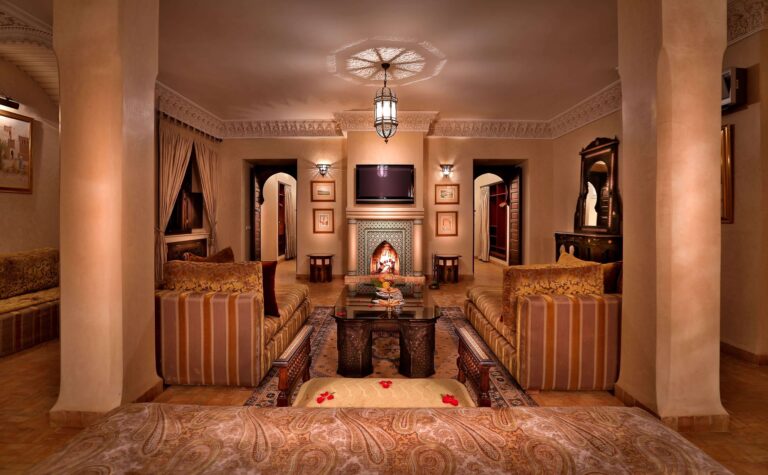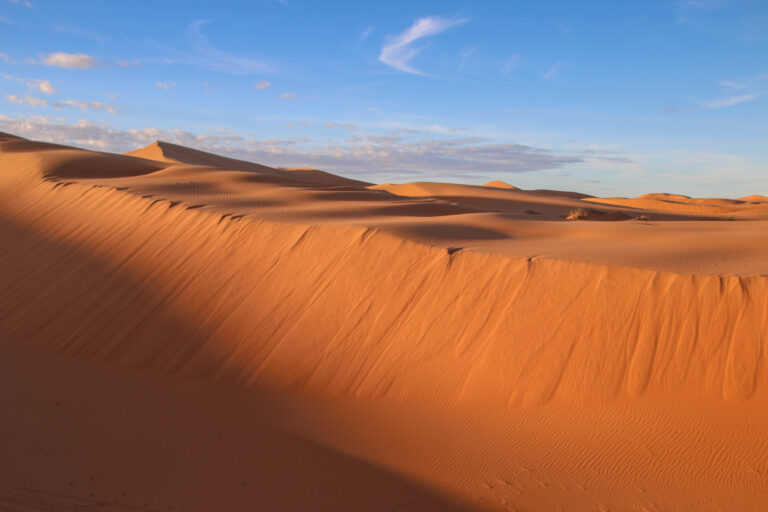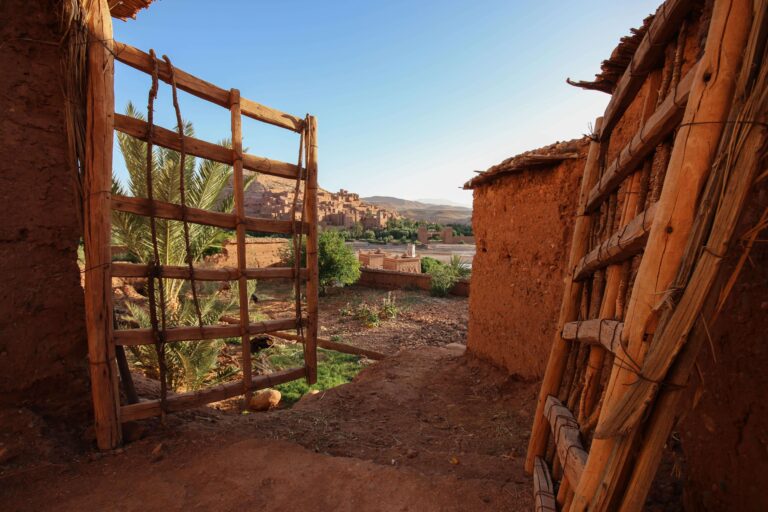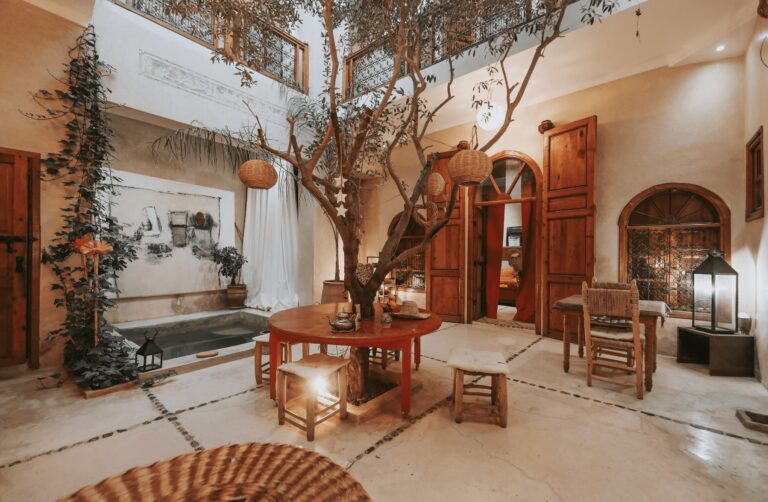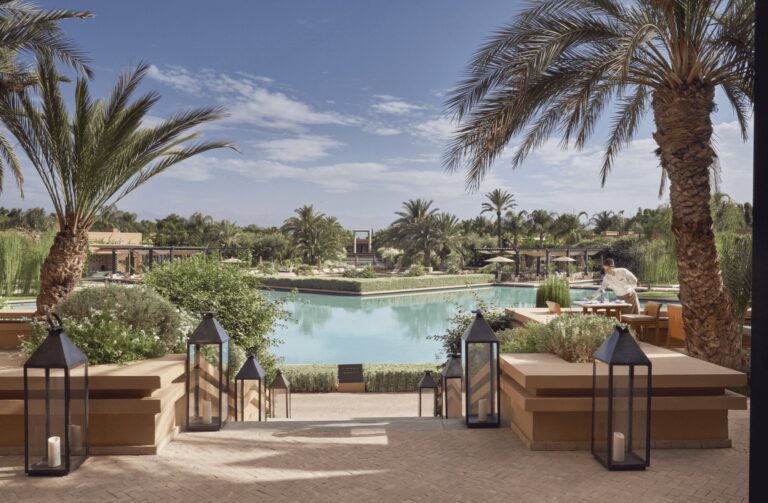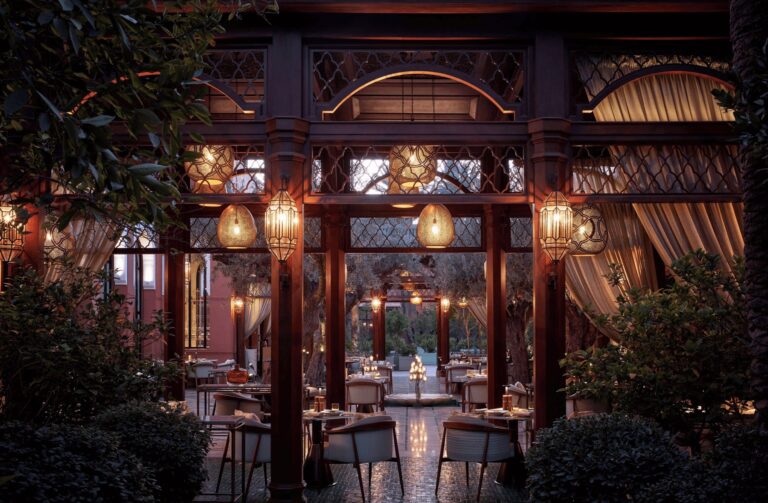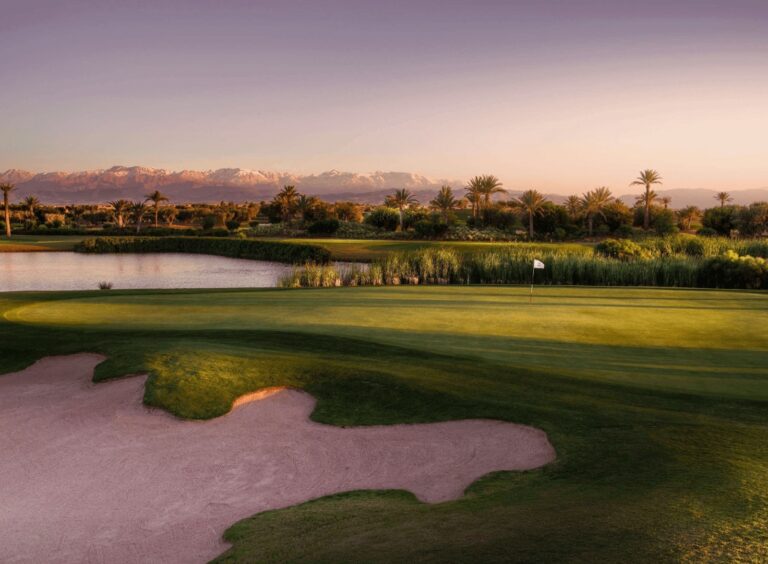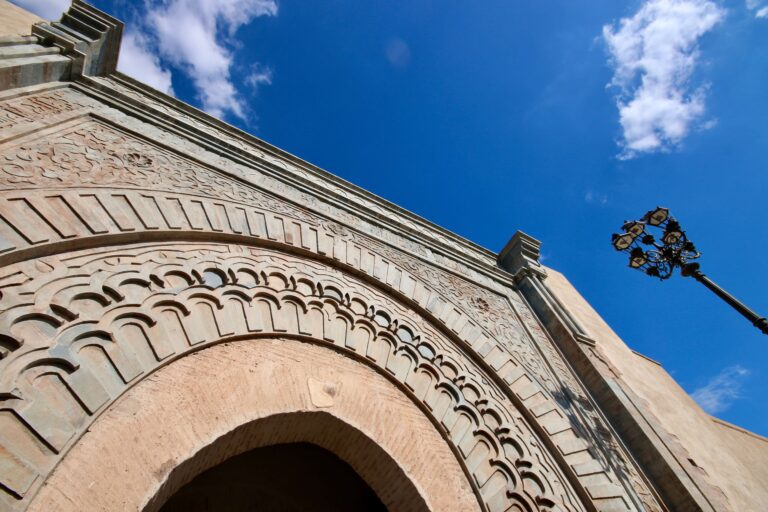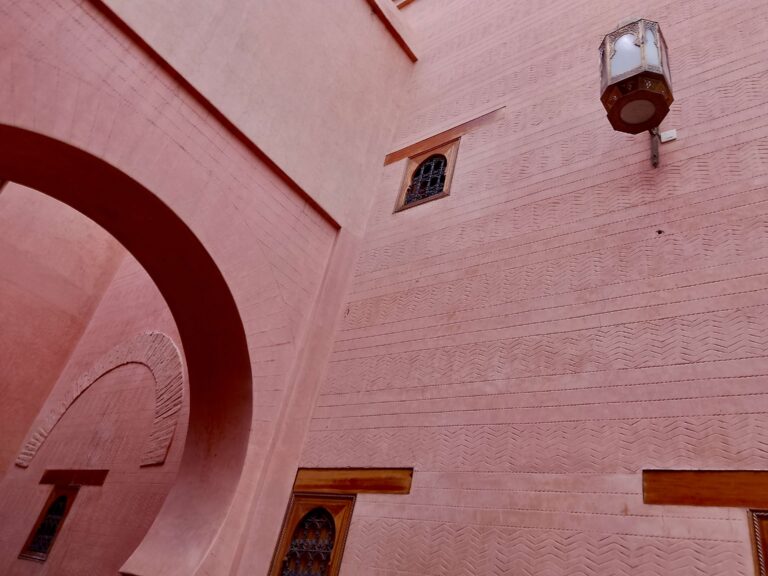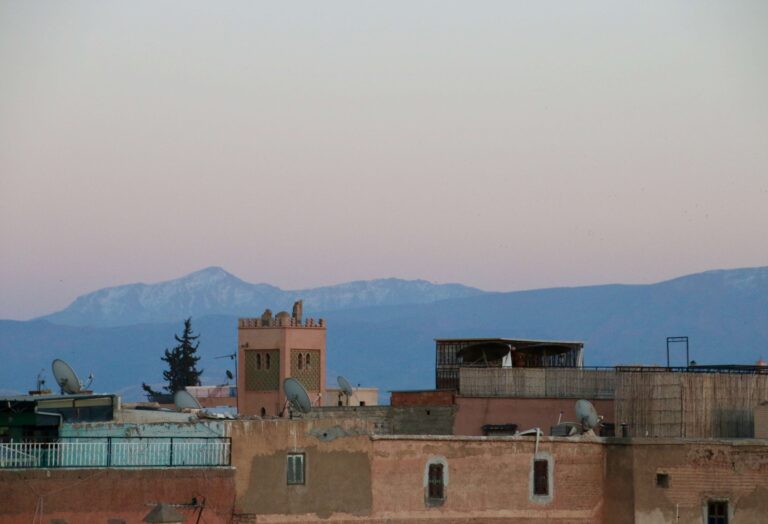Moroccan Culinary Arts Museum in Marrakech
If there’s one place that left a big impression on my most recent visit to Marrakech, it’s the Moroccan Culinary Arts Museum. To be honest, I didn’t end up here intentionally. I just saw it on Google Maps as I was navigating my way to Bahia Palace and decided to take a look inside.
In reality, I ended up spending ages exploring its three floors and multiple courtyards, all of which are free to access. I was blown away by how beautiful the museum is and shocked that there weren’t more tourists there.
So what exactly is the Moroccan Culinary Arts Museum and why should you add it to your Marrakech itinerary?
In this article, I’ll explain exactly what you can see and experience at the Moroccan Culinary Arts Museum to help you plan your visit.
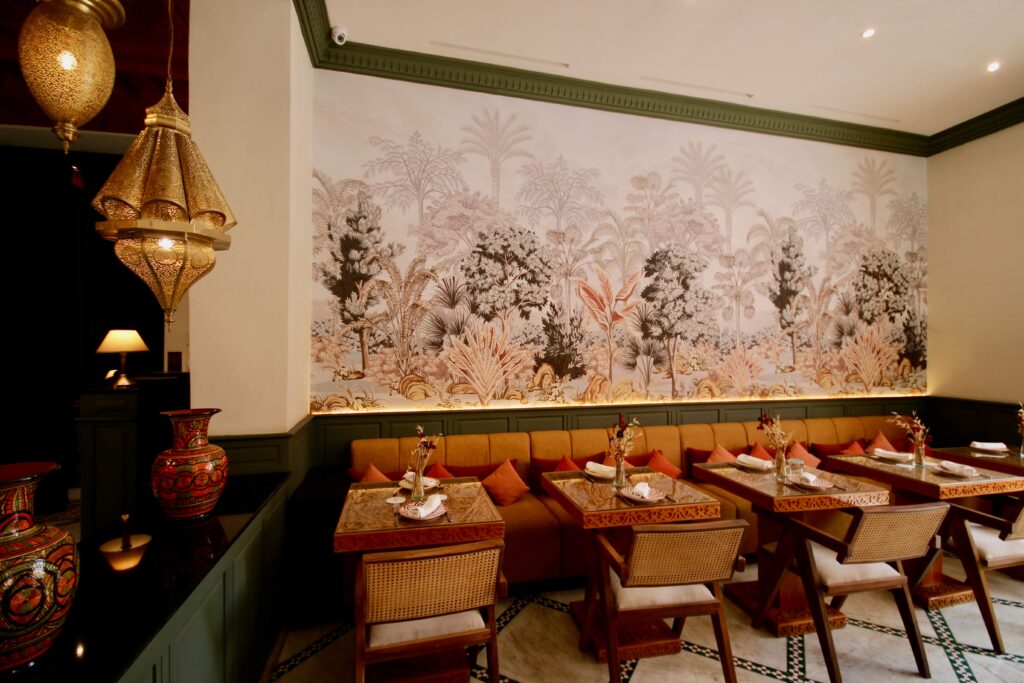
Disclosure: This article contains affiliate links, meaning I earn a small commission when you make a purchase. Affiliate links cost you nothing and ensure my content stays free!
What to expect at the Moroccan Culinary Arts Museum
Occupying an 18th-century palace, the Moroccan Culinary Arts Museum opened in late 2019 and is the first museum of its kind in the country. It’s dedicated to sharing the history and heritage of Moroccan gastronomy, making it a must-visit for foodies visiting Marrakech. Or, in my opinion, anyone who loves beautifully restored buildings.
When you step inside, you arrive in a concept store selling artisan foods and kitchenware. This is a great place to browse Moroccan-inspired culinary gifts for friends and family back home.
It’s also here that you’ll find the reception to the museum, which is staffed by friendly staff. On arrival, they will explain the layout of the former palace and what you can expect to see.
Spanning three levels, the building has been lovingly renovated. It showcases an abundance of zellige, sculpted plaster and hand-painted cedar wood in the traditional zouaké style.
Throughout its warren of rooms and corridors, you’ll find exhibits detailing the ingredients, methods and tools used to create Morocco’s most renowned dishes, such as harira soup, couscous and tagines.
I love that the information is provided in English. This is a welcome addition as many of Morocco’s museums only have descriptions in French and Darija. There are also several video displays illustrating the cooking processes.
The Moroccan Culinary Arts Museum is one of the 8 stops on my recommended one-day Marrakech itinerary.
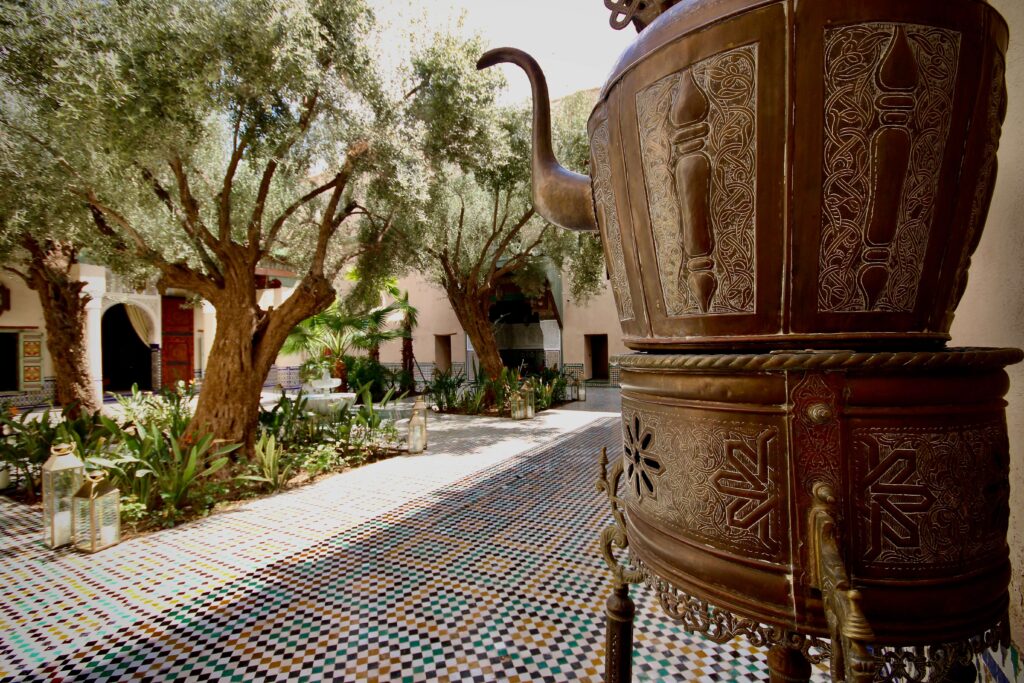
Design of the Moroccan Culinary Arts Museum
On the ground floor of the Moroccan Culinary Arts Museum, you’ll find two stunning interior courtyards embellished with zellige tiles and beautifully carved columns. The first courtyard features a stunning Carrara marble fountain, surrounded by four olive trees and two salons with soaring ceilings.
I sat in this courtyard for ages, just soaking up the peaceful atmosphere and the architectural splendour. When I was there, only a few other tourists passed through. I felt like I had it almost completely to myself. This was in stark contrast to the crowds of Bahia Palace right next door!
Also on the ground floor is Le Salon de Thé. It’s one of my favourite parts of the Moroccan Culinary Arts Museum. Here you can sip on mint tea and sample traditional sweets, backed by some incredible murals. The atmosphere is divine – I could spend all afternoon here with a good book.

Cooking classes at the Moroccan Culinary Arts Museum
On the second level of the Moroccan Culinary Arts Museum, there’s a huge kitchen with 34 interactive stations where hands-on cooking classes take place. These are led by “Dadas” – guardians of traditional culture and culinary knowledge, who pass this down from generation to generation.
From slow cooking to the art of blending spices, these women know everything you need to know about becoming a master of a Moroccan kitchen!
Classes are held every day of the week, with three time slots to choose from: 9 am, 11 am and 3 pm.
There are set menus, depending on which day of the week you choose. I’d recommend checking out their current menus here before locking in your dates. Some are perfect for vegetarians while others are suitable for pescatarians.
All of the menus include two starters, a main course and a dessert. These are enjoyed at the end of your session with your fellow classmates in the rooftop restaurant. You’ll also get a certificate as proof that you’re now a whizz in the Moroccan kitchen!
Classic Cooking Classes at the Moroccan Culinary Arts Museum cost 700 DH per person.
Aside from its Classic Cooking Classes, the museum also runs classes focusing on Moroccan Jewish cuisine (on request) and Premium Cooking Classes. The latter include a welcome tea, a collection of recipes featuring the prepared menu and a branded “Musée de l’Art Culinaire Marocain” cooking apron.
Premium Cooking Classes at the Moroccan Culinary Arts Museum cost 1050 DH per person.
Looking for more cooking class inspiration in Marrakech? Check out my detailed article here.

Dining at Le Douar Medina
On the rooftop of the Moroccan Culinary Arts Museum is Le Douar Medina, a restaurant specialising in classic Moroccan dishes. It’s open from 12 pm to 4 pm each day and is a great spot to enjoy a leisurely lunch after your museum visit, accompanied by wonderful views across Marrakech.
On the menu, you’ll find favourites like meatball tagines and chermoula-stuffed fish, as well as lots of dishes you won’t find on most tourist restaurant menus in Morocco. These include Fassi-style sea bream and El Jadida-inspired couscous, as well as Gazpacho-style cold carrot and citrus soup.
In my opinion, Le Douar Medina is a fantastic place to broaden your Moroccan culinary horizons.
Coincide your visit with a Friday for their couscous special. I’ve had the vegetarian and it was delicious! Alternatively, splurge on the Sunday morning brunch to sample a wide range of dishes. This includes some decadent deserts, which range from traditional Moroccan meringue to berkoukch with amlou and homemade yoghurt.
What I really love about Le Douar Medina is that it reflects the diversity of Moroccan cuisine. In particular, it highlights specialties from lesser-known cities, towns and villages across the country.
While we often lump Moroccan food into one big box, the reality is that there are lots of different products and traditions that have influenced regional cuisine.
Le Douar Medina provides a rare opportunity to sample some of these often forgotten recipes. It’s a “must” for foodies visiting Marrakech!
The Moroccan Culinary Arts Museum is open from 9 am to 8 pm and entrance is free.

PLAN YOUR TRIP WITH MY FAVOURITE RESOURCES:
Find hotels via Booking
Book tours and attractions via Viator or GetYourGuide
Find a rental car via Discover Cars
Book flights via Kiwi or Booking
Search for buses and trains via 12Go or Omio
Get travel insurance via SafetyWing
Buy a digital eSIM with Airalo
By purchasing through my links, you’ll be supporting my website at no additional cost to you
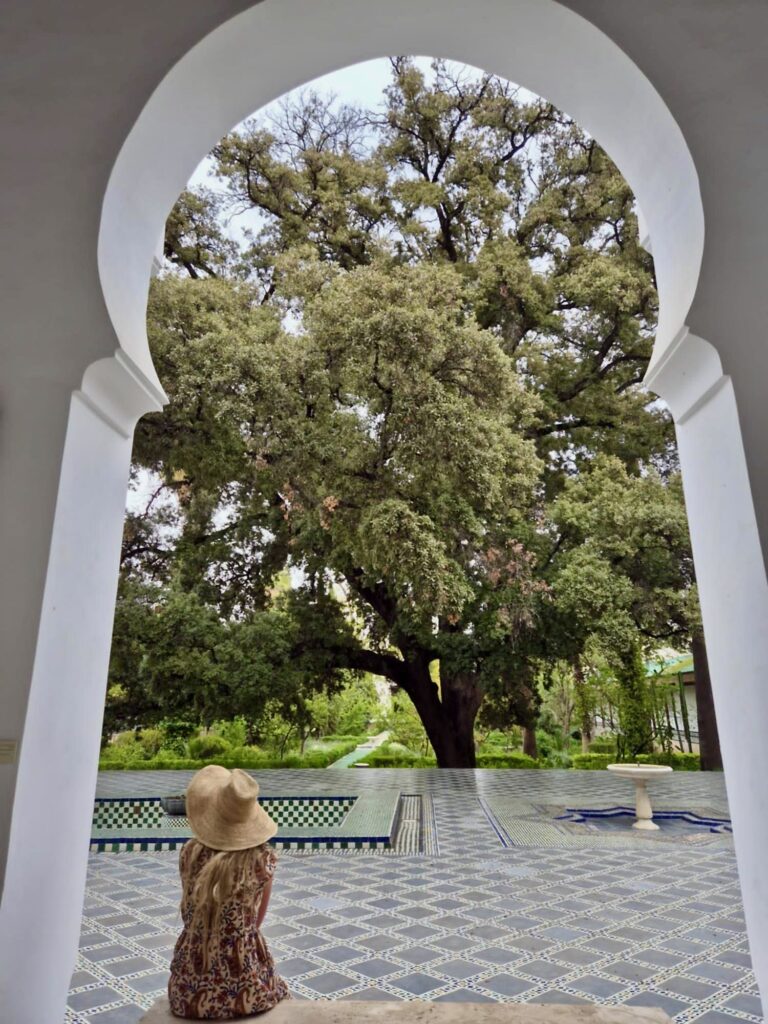
About Me
I’m Malika, a global traveller who first visited Morocco in 2014 before marrying a local and settling down in a little village on the Atlantic coast. Over the years, I’ve developed an intense love for Morocco, its incredible landscapes, storied cities and the exceptionally generous hospitality of its people.
Malika in Morocco is a place to share my years of experience exploring the country, from north to south and from the Atlantic Ocean to the Sahara Desert. As a resource for travellers visiting Morocco, I want to encourage others to experience this captivating destination the way they desire, whether that’s independently or under the expert guidance of local tour operators.
I believe strongly in supporting responsible and sustainable tourism initiatives while inspiring travel experiences that are life-impacting and mutually beneficial for both travellers and locals.
-
9 Best Family Hotels in Marrakech for a Kid-Friendly Stay
Looking for the best family hotels in Marrakech? Explore this curated collection of riads, resorts and apartments that cater to travellers visiting Morocco with kids. There’s no denying it – Marrakech is an incredible destination and one of Morocco’s most popular places to visit. But it can also be an assault on the senses and…
-
Stunning 5-Star Marrakech Hotels for a Luxe Stay in the “Red City”
Looking for the best 5-star Marrakech hotels? Discover 10 incredible places to indulge in a high-end stay in Morocco’s “Red City”. There’s no denying it – Marrakech is an irresistible getaway. It’s located a short flight from many European destinations but with the feeling of being a world away. In my opinion, this historic North…
-
5 Unforgettable Tours to the Sahara Desert from Marrakech
Looking for the best tours to the Sahara from Marrakech? Explore this curated collection of multi-day Moroccan desert trips, including budget-friendly small group adventures and private desert tours in Morocco. Spending a night under the star-studded sky of the Saharan desert is an amazing experience. It’s something that I’ve been lucky enough to do. The…
-
7 Best Places to Stay in Ait Benhaddou: Morocco’s Ancient Ksar
Looking for the best places to stay in Ait Benhaddou? Explore this curated collection of auberges, guesthouses and hotels, all within easy reach of the UNESCO World Heritage-listed ksar. Set against the dramatic backdrop of the High Atlas Mountains lies the fortified ksar of Ait Benhaddou – an ancient walled city that is now designated as…
-
10 Best Budget Riads in Marrakech: Morocco’s “Red City”
Looking for the best budget riads in Marrakech? Discover 10 incredible places to stay if you’re planning an affordable trip to Morocco’s “Red City”. Every time I visit Marrakech, I like to find a new riad to stay in. Considering the city’s abundance of options, I think it will be a never-ending quest! I love…
-
5 Best Luxury Hotels in Marrakech with a Pool
Looking for the best luxury hotels in Marrakech with a pool? Explore this curated collection of riads, resorts and boutique stays. All boast a swimming pool for cooling off in Morocco’s “Red City”. Framed by the Atlas Mountains, Marrakech is deservedly one of Morocco’s top tourist destinations. But it can also become a sweltering cauldron…

